Historic Buildings and Environmental Sustainability

The prevalent idea among building owners is that old buildings are less energy-efficient and more costly — both financially and environmentally — to maintain. Destroying old buildings and constructing new ones therefore, seem more practical than repairing and maintaining old buildings. In the United States, an estimated one billion square feet of buildings are demolished and replaced annually. According to a projection by the Brookings Institution, 82 billion square feet of existing space will be demolished and replaced between 2005 and 2030 – representing about 25% of today’s existing building stock.
Emphasizing Low-Carbon Strategies to Attract Climate-Savvy Investors

For years, businesses have been trying to learn how best to deal with the effects of climate change in their annual reports. On the side of capital markets, they learned that annual financial performance may not be enough for them to discern whether they are making good investments or not. As they primarily reviewed financial performance, some investors felt the impact of climate change when the companies they invested in experienced losses due to extreme weather conditions.
Sustainability Matters: Pedaling Towards a Sustainable Future

The following article is part of the ongoing Sustainability Matters series on the FirstCarbon Solutions (FCS) blog, which focuses on those who share a commitment to sustainability, the environment and our planet. The series concentrates on companies and organizations that conduct routine, everyday business in an exceptional, sustainable manner, as well as those offering unique products and services in a sustainable fashion. FCS hopes that the Sustainability Matters series can open eyes to those striving to make a difference.Click hereto find previous articles from the Sustainability Matters series.
Sustainability Initiatives: Keeping up with Consumers’ Awareness

The world is home to over seven billion people, nearly all of whom necessarily consume goods every day. With every product that consumers around the world buy, they generate waste, increase their carbon footprint, and impact the environment.
A Sustainable Future for the Healthcare Industry

A significant hurdle to a long term sustainable healthcare industry is how to instill environmental sustainability efficiently and effectively.
Environmental Sustainability Solutions in China: A Greener Country

China, in every sense of the word, is a global giant. Being one of the world’s largest countries, China is also home to the world’s largest population and one of the world’s largest economies. But being on top of world rankings isn’t always good, especially when it comes to being dubbed as one of the world’s most polluted countries.
Sustainability Initiatives: Sleeping Tight in Eco-Hotels
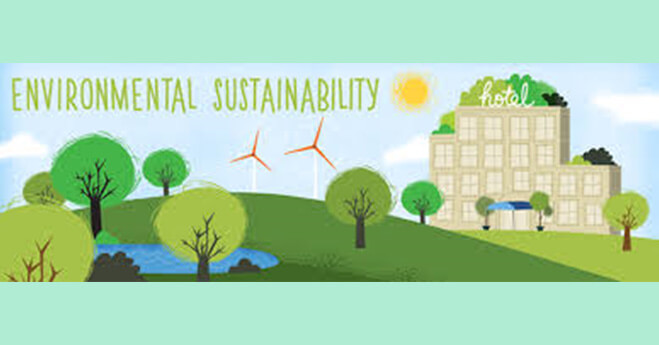
Business travelers are keen to reduce their impacts on the environment by making the smart choice to stay at green-certified hotels. According to a recent survey by Timetric’s Global Business Traveler, “47 percent of survey respondents state that it is important to stay in a green certified hotel during a business trip, while 7 percent consider it to be extremely important”. Implementing sustainable practices is one way for hotels to cut down on operating costs, add more to their bottom line, and appeal to environmentally cognizant travelers. By building a new structure, or retrofitting an existing edifice to meet the standards of the Leadership in Energy and Environmental Design (LEED) or the U.S. Green Building Council (USGBC), hotel owners can lower their operating costs, attract these environmentally conscious business travelers and improve their relationship with the community and local government. Some hotels help preserve the environment by keeping linens on the beds for more than one day, saving hundreds of gallons of water used to launder them; or by simply hanging signs reminding patrons to shut off any electronic equipment when not in use. However, some hotels are taking it a step further. Take, for example, the four-star Hotel Landgut Borsig outside of Berlin. Their guests enjoy the same amenities offered by other hotels in the same league: comfortable yet luxurious mattresses, locally sourced gourmet meals, saunas or bread-making classes. The main difference between Landgut Borsig and other four-star hotels, is that they do not have a mini-bar. This is because the hotel is an almost zero-carbon hotel. It has taken steps towards producing its own energy by purchasing the surrounding forests as a means of neutralizing its carbon footprint. Another example is Vienna’s Hotel Stadthalle – touted to be the world’s first carbon-neutral city hotel. Here, the standard sustainable offerings include organic bed sheets and towels; food items whose ingredients you can trace back to the field they were planted in simply by reading the attached label; and in addition to this, the hotel’s toilets use collected rain water. Even stateside properties such as The Cove at Yarmouth Resort in Massachusetts have implemented changes for more efficient and effective energy management. The resort reduces its water and energy costs with the installation of new efficient hybrid water heaters that have led to a 12 percent savings. LED lights and variable speed air regulators have also helped lower energy usage. Larger, more established hotel chains such as the Hyatt, Marriott and InterContinental have also developed serious sustainability programs. Some hotels have even begun to use sustainable “green” room key cards. The Green-Key is an environmentally friendly alternative to the typical plastic keycard. Unlike plastic keycards, Green-Key is recyclable, biodegradable and produced from a renewable resource called paperboard. The paperboard resource makes the Green-Key an economical choice versus other high priced eco-friendly products. While there are skeptics who may believe that the sustainable efforts of these hotels are nothing more than “flowery” or “granola” nonsense, many within the hotel industry are recognizing that implementing these measures is good for business, not to mention it makes absolutely good business sense due to rising energy costs – which is generally a hotel’s largest expense. A hotel can become sustainable through a number of ways, including but not limited to: Sustainable supply chains for linens and other hotel supplies Locally sourced food items Efficient HVAC (Heating, Ventilation (architecture), and Air conditioning and Water Heating Systems Low flow water fixtures LED Lighting The hospitality industry has begun to recognize the social and economic benefit of creating a sustainable future and your business or organization can reap similar rewards by improving efficiency and productivity. Let FirstCarbon Solutions show you how advantageous it can be to move towards a sustainable future today. Our sustainability solutions enable you to monitor, manage, and report pertinent data quickly and cost-effectively, so you can enhance your operational efficiency. Our vast experience in working with various companies, organizations and government institutions ensures you have the right strategies and practices in place. We fully integrate consulting and software with superior capability in back-office data processing to give you well-rounded and the most effective solutions for sustainable profitability.
The Benefit of Corporate Social Responsibility (CSR) Reporting

Constant information flow and growing environmental consciousness — the interweaving of these two factors upholds Corporate Social Responsibility (CSR) more as a business necessity than a mere option.
Sustainability Matters: Reducing The Footprint of Your Footprint

The following article is part of the ongoing Sustainability Matters series on the FirstCarbon Solutions (FCS) blog, which focuses on those who share a commitment to sustainability, the environment and our planet. The series concentrates on those companies and organizations that conduct routine, everyday business in an exceptional, sustainable manner, as well as those offering unique products and services in a sustainable fashion. FCS hopes that the Sustainability Matters series can open eyes to those striving to make a difference. Click here to find previous articles from the Sustainability Matters series.
Sustainability Initiatives for Businesses

A recent study entitled Americans’ Actions to Limit Global Warming in April 2013 found that American consumers proactively make eco-friendly choices. Furthermore half of the consumers in the survey said they consider environmental impacts before making a purchase.
Climate Action Plan: Revitalizing the Energy Industry

On June 14th, 2013 US President Barack Obama delivered a strong message to the American public as well as to the rest of the world: strong, proactive action on climate change needs to be taken now.
Sustainability Matters: Brewing Sustainability
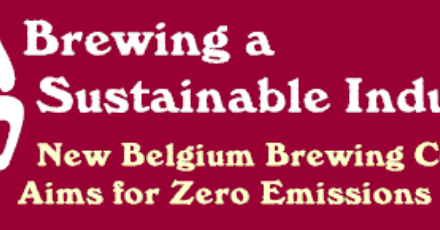
Since its inception in 2008, FirstCarbon Solutions (FCS) has been dedicated to sustainability by assisting companies, governments, institutions and non-profit organizations manage their greenhouse gas emissions, monitor their energy consumption, and manage their supply chain. As a steward of the environment, FCS takes great pleasure in highlighting those who are equally passionate about ensuring a more sustainable future. To help spread the word about companies, organizations, and other entities that foster a sustainable mindset, FCS would like to introduce the Sustainability Matters series. The following article is the first in this ongoing series, which will focus on those who share a commitment to sustainability, the environment and our planet. Sometimes, the series will concentrate on those companies and organizations that conduct routine, everyday business in a unique, sustainable manner. Other times, the focus will be on those offering unique products and services in a sustainable fashion. Either way, FCS hopes that the Sustainability Matters series can open eyes to those striving to make a difference.
Sustainability Metrics: ESG Actions Make for Profitable Business

As changes in the environment continue to affect businesses, engaging in eco-friendly businesses seems like a “no-brainer”. Not only do they help prepare companies for change, but environmental sustainability solutions also help cut costs, increase profit, and make brands trustworthy and more sought-after.
A Global Perspective on Sustainability Initiatives (Part 1)

The word “sustain” and derivatives “sustainable” and “sustainability” have drastically changed over the years. The American Heritage Dictionary of the American Language (1978) defines sustain as “to keep in existence, maintain or to supply with necessities or nourishment.” They list sustainable as an adjective with sustainability not even mentioned.
A Global Perspective on Sustainability Initiatives (Part 2)

For sustainability to happen in the modern sense of the world, the idea of cultural distinctions to maintain their ideas must shift to a world-wide view.
California’s New Water Resources Management Plan
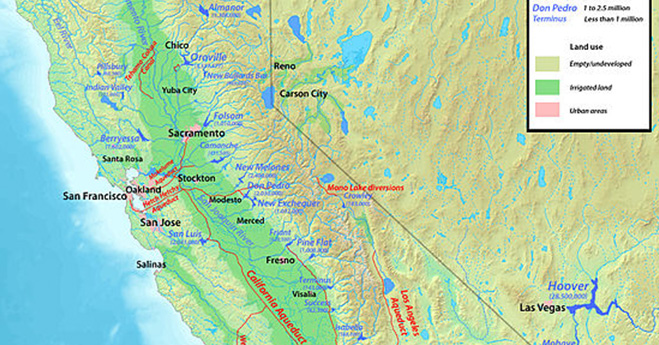
The transfer of water to meet the demands of various populations in different geographical areas is not a new concept. The ancient Romans built aqueducts to supply water for public baths and drinking. In more recent times, New York City is supplied by a web of tunnels and pipes that stretch 125 miles north into the Catskills Mountains. Due to the accelerated pace of population growth and an increase in the amount of water each person uses, the need to convey water to meet this increase in demands suggests that the need for conveyance will persist.
The Effects of Environmental Compliance on Telecommunication

If you watched television anytime during the past decade, then chances are you are familiar with the Verizon Wireless ad campaign that featured a bespectacled Verizon employee roaming the far reaches of the United States asking the question, “Can you hear me now?” This ad campaign was seemingly inescapable, and proved to be wildly successful, growing into its own pop culture phenomenon. Several diverse factors likely contributed to the success of this campaign, but arguably one of the primary reasons for it’s overall popularity was that the actor’s situation was all too relatable to the millions who use a mobile phone. Who hasn’t lost mobile phone service at one point or another? Even those who reside in the most developed of metropolitan centers, where every form of media and communication is at our disposal, are not immune to the plight of the “dropped” call.
Environmental Compliance Reporting Reduces Business Risk

Business risks come in three varieties: known risks, unknown risks, and unknown unknown risks. The latter two present the greater challenge to identify. Unknown risks are those not readily or typically linked with a particular industry or project type but become revealed through a deliberate identification process. The third variety is elusive by nature. An example of this was the Icelandic volcano eruptions in 2010 that disrupted air cargo transport between Europe and Asia causing supply chain disruptions and manufacturing plants to temporarily shutdown. This was an unknown unknown risk.
Sub-Metering – Effective Energy Management With Cost Reduction
Each month, every building receives an electricity bill. Although the payment of this bill is vital for a company to continue operating, it contains numerous tidbits of information that are entirely useless to the reader. For instance, “Regulatory Asset Recovery Rate Rider” is provided on the bill, but what does this mean to a restaurant owner? What value does your electricity invoice provide you except a payment amount and due date? One thing about electricity and other utilities, unlike anything else we purchase, is that we pay for utilities after we have consumed them, without knowing how much we consumed. Deploying an electricity sub-metering system will help you understand where your electricity costs are coming from and help make sense of your bill and why you are paying so much.
FirstCarbon Solutions to Perform Hollywood Central Park EIR

Sensitive Species Investigations: Are Bats Really Blind? (Part 2)

Sensitive Species Investigations: Are Bats Really Blind? (Part 1)

Did you know? Bats are not blind. In fact, they see very well. However, their sense of hearing is so well developed and adapted for processing a large amount of data that they prefer to navigate with their ears.
The Changing Landscape of the Modern Sustainable Sporting Venue

Within our ever-evolving modern society, both professional sports and the environment play equally important, yet quite different roles. From afar, these two subjects are bound by few common threads. But as dissimilar as they appear, both sports and the environment occasionally cross paths, converging at the stadiums and arenas that house the games and matches that millions annually attend. These sporting venues are impressive structures, able to accommodate tens of thousands of fans who gather to collectively support their favorite team. Just as sports is an important part of our social framework, these venues are equally significant to the framework of sports. However, an unfortunate downside to this convergence of sports and the environment is the excessive waste production and resource depletion that occurs within and around these venues, and the substantial impacts that this has on the surrounding environment.
Using Solar Panels to Improve Energy Resource Management

As detailed in the Leadership in Energy and Environmental Design (LEED) reference guide for Green Building Design and Construction (click here for the free 2009 version), use of renewable energy in lieu of fossil fuel-based energy can dramatically improve outdoor environmental quality. Generating renewable energy on-site is an excellent way to reduce the negative environmental impacts associated with a building’s energy use.
Bats and Wind Energy Management – 3 Things You Should Know

Did you know? Bats are as equally susceptible to impacts related to renewable energy development as birds and other wildlife species? In fact, the California Energy Commission has published the “California Guidelines for Reducing Impacts Birds and Bats from Wind Energy Development” to help reduce potential project impacts to birds and bats. Recently, awareness has grown for potential […]
Health Risk Assessment and POP
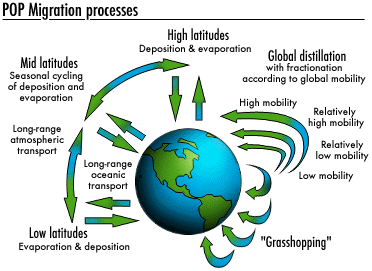
Persistent Organic Pollutants and their Impacts on the Arctic Ok I’ll be the first to admit, it’s not the kind of POP that most of us have come to know; however, persistent organic pollutants (POPs) are chemicals that contain carbon that resist degradation and can have just as much impact on our health as those sugary beverage drinks. Although many different chemicals, both natural and anthropogenic, may be defined as POPs, the most common known POPs include many of the first generation of insecticides such as DDT (Dichloro-Diphenyl-Trichloroethane) and industrial chemicals like PCBs (polychlorinated biphenyls). POPs may persist in the environment for periods of several years and may bioconcentrate up to ten thousands fold. [1] As a result, POPs are being identified all over the world – even in regions where they have never been used. A perfect example of this is in the Arctic, where some of the highest levels of POPs have been recorded in the polar areas.
CSR Reporting Solutions in Regulated Industries

Within the recent past, corporate social responsibility (CSR) has become increasingly topical, breaking the perception that it considers only philanthropy. Now, CSR is fundamentally about how companies integrate philanthropy along with their core business practices, and public policy dialogue, as reported in a Harvard Kennedy School article. Moreover, according to an article in the Journal of Business Ethics, CSR presents the following four dimensions:
The Role of the CFO in Corporate Sustainable Management Solutions

When one thinks of individuals involved with incorporating sustainability into their business, the position of Chief Financial Officer (CFO) is not usually what comes to mind. However, the CFO plays a large, if not critical, role in sustainable management solutions that companies and organizations across the globe are addressing. To become sustainable, an organization must become energy efficient, maximize their resource use, and streamline their processes. Achieving these goals requires intensive resource planning that directly affects the core activities of a business. And achieving these objectives has enormous impacts on the bottom line. If these goals and P&L influences are so centrally influential to a company, shouldn’t the CFO be ultimately responsible for sustainability matters?
The Role of the CFO in Corporate Sustainable Management Solutions

When one thinks of individuals involved with incorporating sustainability into their business, the position of Chief Financial Officer (CFO) is not usually what comes to mind. However, the CFO plays a large, if not critical, role in sustainable management solutions that companies and organizations across the globe are addressing. To become sustainable, an organization must become energy efficient, maximize their resource use, and streamline their processes. Achieving these goals requires intensive resource planning that directly affects the core activities of a business. And achieving these objectives has enormous impacts on the bottom line. If these goals and P&L influences are so centrally influential to a company, shouldn’t the CFO be ultimately responsible for sustainability matters?
Utilizing the ‘Triple Bottom Line’ as Sustainability Metrics
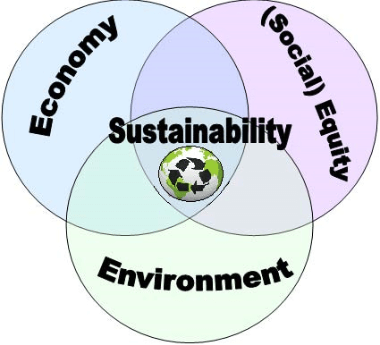
As environmental consulting experts at FirstCarbon Solutions (FCS), we are often tasked with balancing the sometimes competing, yet always important, elements that comprise the “triple bottom line” – economy, (social) equity, and environment. Also referred to as the “three E’s” or the “three pillars”; the triple bottom line can serve as sustainability metrics, measuring the overall […]